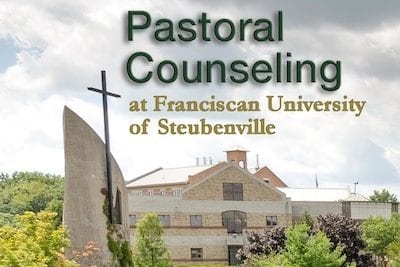In practice, Pastoral Counseling offers clients an intersection of theological foundations, philosophical moral grounding, and evidence-based clinical skill applications. To envision how this intersection comes to life in a pastoral counseling session, a brief, fictional case study may be helpful. Imagine a young, 20-year-old male college student comes to the office of a pastoral counselor. Within the first meeting, the pastoral counselor is already aware that their time together with the student is likely limited. From a short-term strategic pastoral counseling perspective, therapy may span as little as five sessions. In a college setting, a short term perspective is particularly relevant as students typically have limited time to commit to the process of therapy. With this in mind, the pastoral counselor, from the first meeting, is aimed at efficiently and compassionately guiding the student toward a concise description of his presenting problem. The pastoral counselor, in as little time as possible, uses rapport building techniques of active listening, warmth, empathy and genuineness to establish a safe, trusting environment to help the student set a realistic goal for short-term therapy. As the counselor begins the engagement stage of therapy, the counselor is relying on theological and clinical teachings to conceptualize the student’s issues and construct a theologically, morally, and clinically sound treatment plan. In this case, the student brings to therapy the stress and anxiety he has been experiencing due to his difficulty adjusting to college life which has led to a downfall in academic, athletic, and social achievement. From a clinical perspective, the counselor may consider the diagnosis of adjustment disorder given his symptoms aligning with his major life transition. From a moral and theological perspective, the counselor would consider asking the student about his lifestyle choices, his worldview, his virtue strengths, his faith life, etc. The student, given the space to explore his own ethical and moral worldview, discloses that college party life and hookup culture misalign with his own values of chastity and temperance. With this conceptualize, the pastoral counselor would choose holistic interventions aimed at treating the clinical symptoms of distress while also fostering the student’s moral growth as well in order to resolve the dissonance the student is experiencing. Therapy sessions would also be used to explore the student’s view of chastity and how his thoughts, behaviors and emotions are currently leading him away from a chaste life and interventions would focus on helping the student acquire the skills he needs to live a life congruent with his moral ideals. Ultimately, the goal will be for the student to become an integrated person, which calls for holistic interventions that target all domains of the student’s health. In terms of managing the student’s symptoms of anxiety, the counselor may use clinical techniques of progressive relaxation, but teach the student to relax while using religious meditations that help the student connect with his faith tradition. The counselor may also use positive psychology approaches of strengthening the virtues, and assign behavioral experiments to strengthen the student’s virtues of prudence, temperance, and fortitude. The counselor may also assign light reading to help the student grow in his own theological understanding of what it means to live a life of chastity. The counselor would also be sensitive to the student’s academic and athletic needs, perhaps suggesting a tutor and ensuring the student is attending to his own physical health without overloading his schedule. At the end of the brief therapy, it would important for the pastoral counselor to assess the need for referral if the student’s clinical symptoms of depression or anxiety have persisted or worsened, in which case a referral to other, long-term mental health professionals may be appropriate. On the other hand, if the student has improved in his mental health but would like to continue exploring his spiritual growth, a referral to a spiritual director may alternatively be appropriate. This holistic approach demonstrated throughout the process of this fictional case demonstrates some of the practical applications of pastoral counseling.
About the Author






